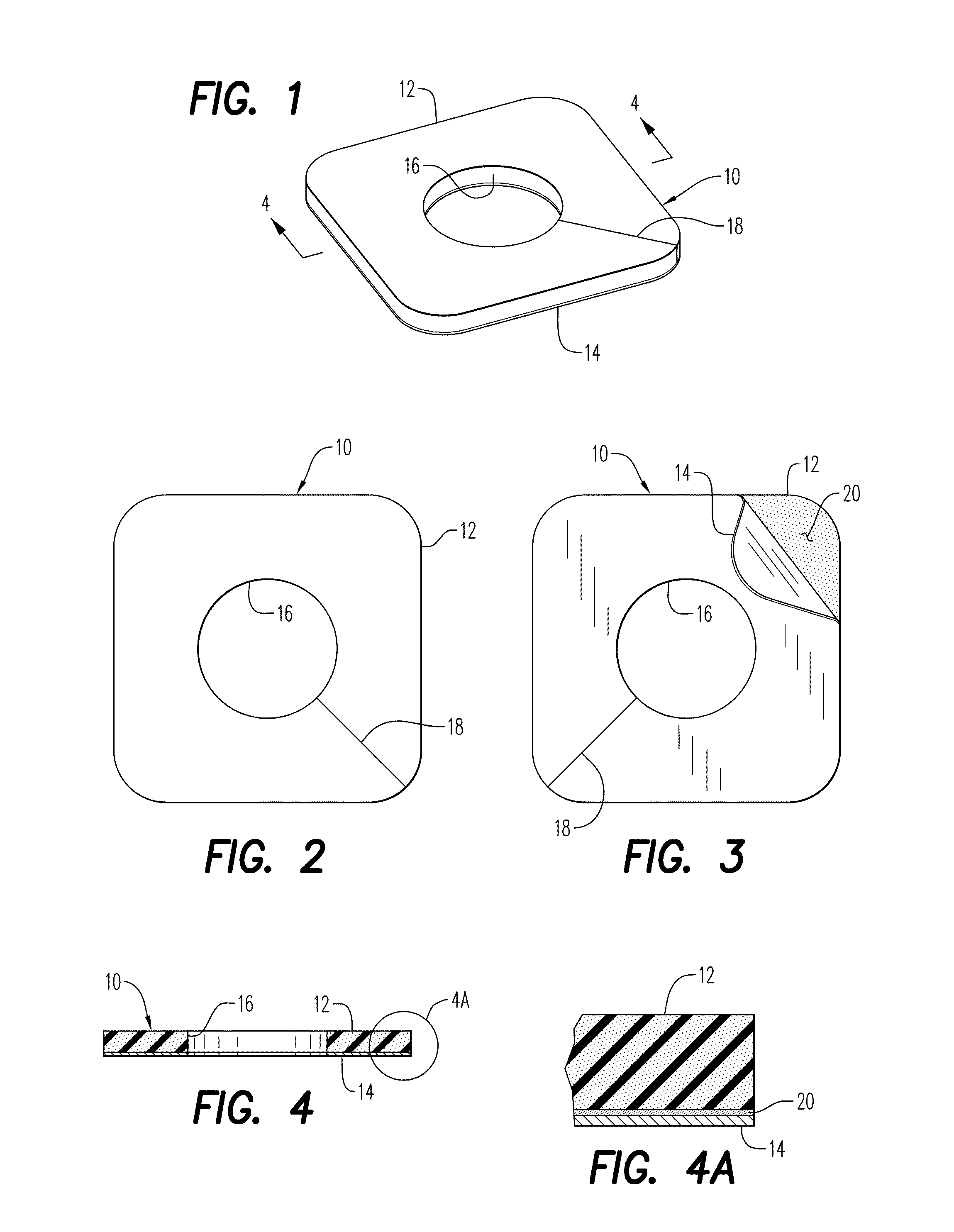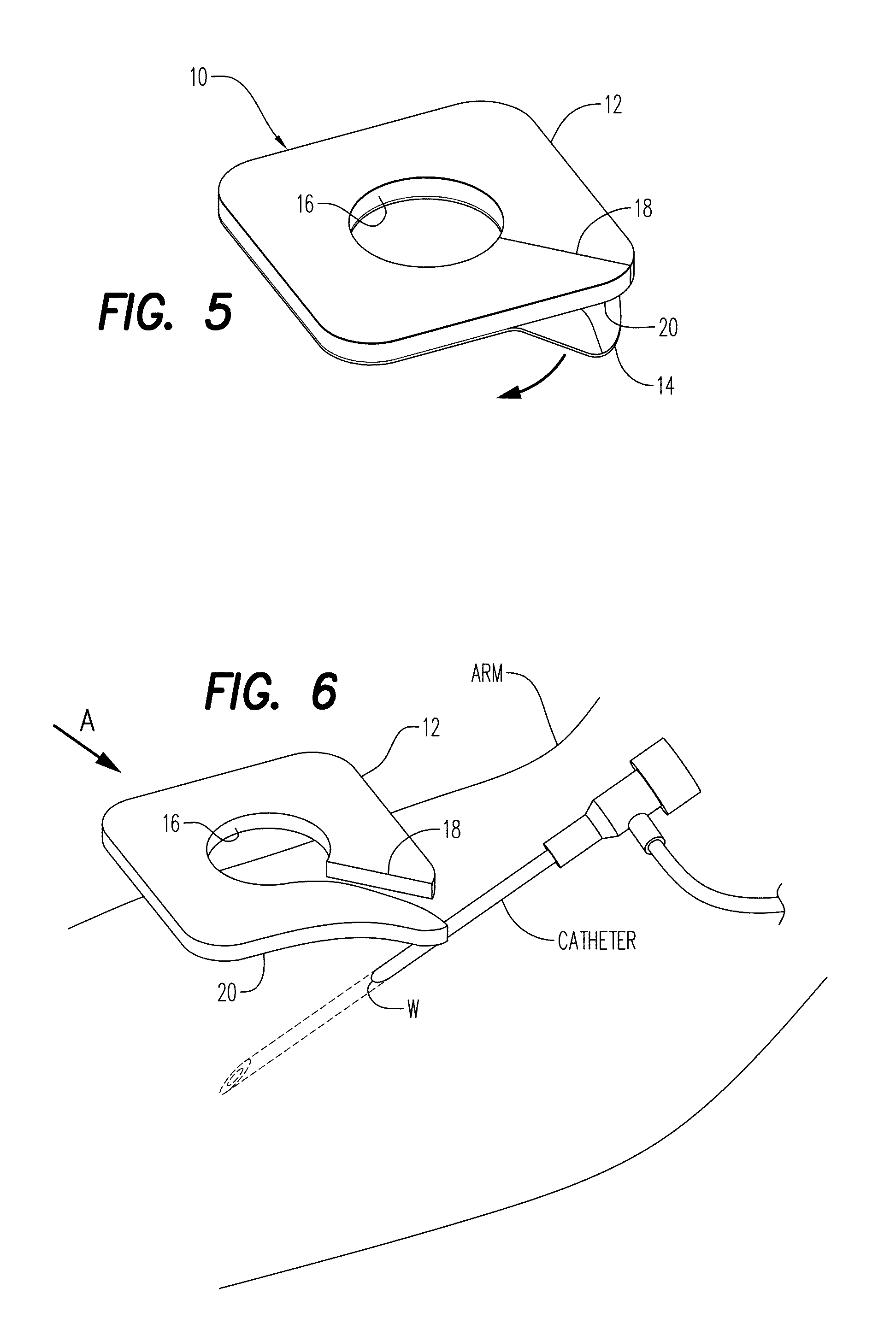Method of reducing infections and/or air embolisms associated with vascular access procedures
a vascular access and air embolism technology, applied in the field of vascular access procedures, can solve the problems of a hostile environment for any invading bacteria, a powerful desiccant, etc., and achieve the effects of promoting blood clotting, reducing bacteria, and reducing infections
- Summary
- Abstract
- Description
- Claims
- Application Information
AI Technical Summary
Benefits of technology
Problems solved by technology
Method used
Image
Examples
Embodiment Construction
[0044]Several in-vitro studies were conducted to show whether the anhydrous ferrate compound taught in U.S. Pat. No. 6,187,347 and distributed under the trademark PRO QR affords antimicrobial benefits with respect to well-known microbes.
I. Microbial Barrier Test / Strike Through Test for Pro QR (7 Days) [NAMSA, APPTEC]
[0045]Five USP microbes—S aureus, P aeruginosa, E coli, C albicans, A niger—and three other microbes—MRSA, MRSE, VRE—were used to test for growth using PRO QR against a control. The control showed growth after seven days. For PRO QR, the hemostatic agent of the present method, no growth for all the microbes after seven days showing the hemostatic agent to be an effective microbial barrier.
II. ASTM E 2149-01
[0046]This is a standard test method for determining antimicrobial activity of immobilized agents under dynamic contact conditions [AppTec].[0047]24 hour assay without re-inoculation
[0048]
PRO QRPRO QRLogLogControlInitial contactreductionreductionLog reductionCFU / ml1 hr...
PUM
 Login to View More
Login to View More Abstract
Description
Claims
Application Information
 Login to View More
Login to View More - R&D
- Intellectual Property
- Life Sciences
- Materials
- Tech Scout
- Unparalleled Data Quality
- Higher Quality Content
- 60% Fewer Hallucinations
Browse by: Latest US Patents, China's latest patents, Technical Efficacy Thesaurus, Application Domain, Technology Topic, Popular Technical Reports.
© 2025 PatSnap. All rights reserved.Legal|Privacy policy|Modern Slavery Act Transparency Statement|Sitemap|About US| Contact US: help@patsnap.com



